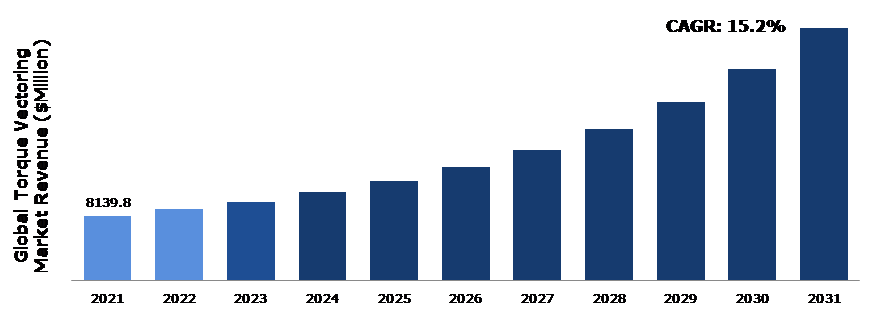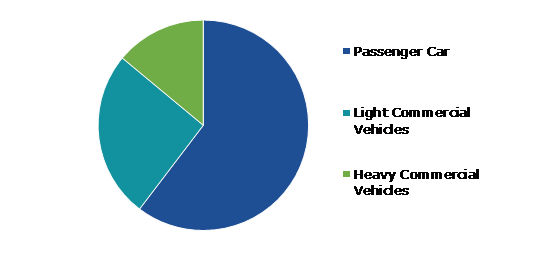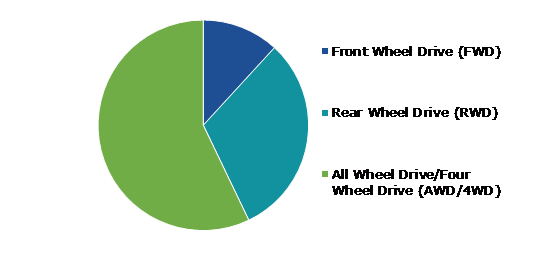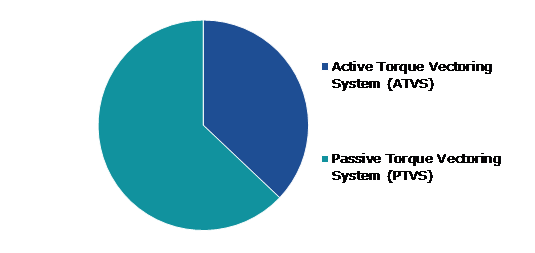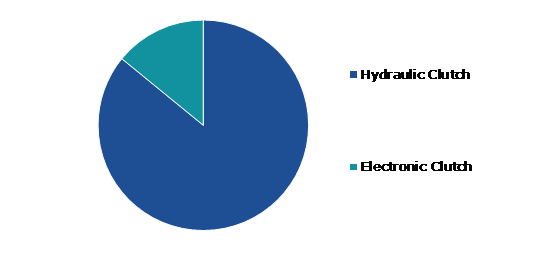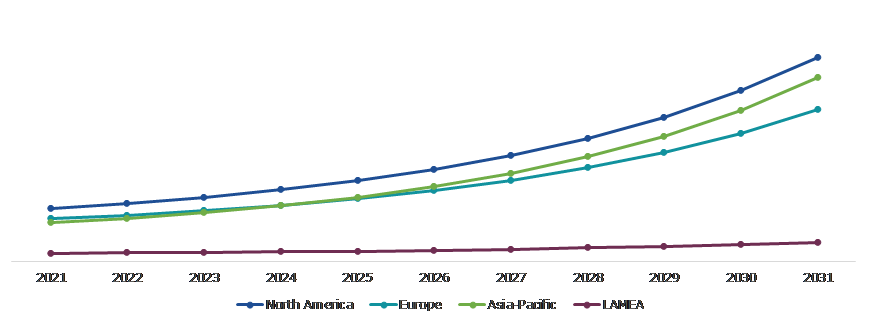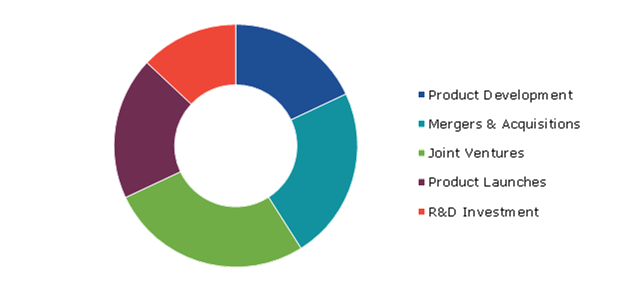Torque Vectoring Market Report
RA03329
Torque Vectoring Market by Vehicle Type (Passenger Car, Light Commercial Vehicles, and Heavy Commercial Vehicles), Propulsion (Front Wheel Drive (FWD), Rear Wheel Drive (RWD), and All Wheel Drive/Four Wheel Drive (AWD/4WD)) Technology (Active Torque Vectoring System (ATVS) and Passive Torque Vectoring System (PTVS)), Clutch Actuation Type (Hydraulic Clutch and Electronic Clutch) and Regional Analysis (North America, Europe, Asia-Pacific, and LAMEA): Global Opportunity Analysis and Industry Forecast, 2022–2031
Global Torque Vectoring Market Analysis
The Global Torque Vectoring Market Size was $8,139.8 million in 2021 and is expected to grow with a CAGR of 15.2%, by generating a revenue of $31,791.1 million by 2031.
Global Torque Vectoring Market Synopsis
The growing demand for high-end cars and SUVs is anticipated to drive the growth of the torque vectoring market. The torque vectoring concept is increasingly used in high-end luxury cars. This phenomenon supplies torque independently to individual wheels and thus, improves traction control significantly. The torque vectoring aids in increasing the stability of the car, therefore, the driving dynamics of the car are increased tremendously. In addition, torque vectoring is beneficial in slippery conditions and enhances cornering stability. More stability through the corners increases the safety of drivers. This method could be employed in all-wheel-drive vehicles and front-wheel-drive.
However, torque vectoring is an expensive method and complicated to repair too. In addition, the benefits of torque vectoring can be realized only when driving down muddy country roads. Owing to these factors, the torque vectoring market growth is expected to be hampered during the forecast period.
Increase in sales of electric vehicles (EVs) across the globe is expected to offer excellent opportunities to torque-vectoring market players. The development of EVs with improved performance is the key objective for manufacturers and research centers worldwide. To attain these objectives, the torque vectoring method is widely used in Advanced Driver-Assistance Systems (ADAS). The handling response of EVs can be significantly enhanced by employing the torque vectoring phenomenon.
According to regional analysis, the North America torque vectoring market accounted for the highest market share in 2021. Robust technological developments and product modifications in this region have majorly contributed to the torque vectoring market growth. In addition, the significant growth of the EV market in the U.S. is further supplementing the market growth. Rise in environmental initiatives and revised fuel economy norms are augmenting the growth of EVs in the U.S.
Torque Vectoring Market Overview
The torque vectoring concept enhances a car’s grip when driving on slippery roads. This technology employs the concept of differential for the wheels. One wheel on the axle is allowed to go faster than the other. Torque vectoring is often electronically maintained for more precision and accuracy. It does a redistribution of torques between the two wheels of the driven axle under various traction situations. This technology also improves steering response, while also improving vehicle dynamics.
COVID-19 Impact on Torque Vectoring Market
The novel coronavirus pandemic negatively affected the torque vectoring market growth. Strict lockdowns and business slowdowns as well as shutdowns hampered manufacturing and transportation activities, which disrupted the supply chains. In addition, the pandemic impacted the automotive sector across the globe. The lockdowns shut down production of original equipment manufacturers (OEM). The dramatic fall in sales of all vehicle categories led to losses in revenue. For instance, the sales of the vehicle were remarkable in the Asia-Pacific before the pandemic. However, during the COVID-19 outbreak, the sales of vehicles in this region dropped sharply due to COVID-19 transmission. This, in turn, hindered the torque vectoring market in this region. The post-COVID-19 outlook for the automotive sector is significant as countries have relieved lockdowns. Major car manufacturers are observing substantial growth in all types of vehicle sales including high-end luxury cars. This, in turn, is expected to augment the growth of the torque vectoring market.
Significant Growth in Vehicle Sales Along with the Rise in Prevalence of Advanced Technologies in the Automotive Sector is Expected to drive the Market Growth
The significant rise in demand for vehicles worldwide is boosting the global torque vectoring market growth. For instance, higher-end luxury cars registered significant sales across India post-pandemic. The torque vectoring concept is generally used in high-end cars. In the automotive sector, customers are highly inclined toward getting an advanced and better in-vehicle experience, which is why there is increasing adoption of technologies such as torque vectoring by automakers. Torque vectoring varies the torque applied to each wheel. Therefore, a vehicle's handling characteristics can be altered to induce oversteer or understeer with the aim of neutrality and safety.
High Cost is Anticipated to Restrain Torque Vectoring Market Growth
The major disadvantage of torque vectoring is cost. The more advanced the technology, the more costly it is. In addition, this system is more complex than brake-based systems. It generally comprises a standard open differential. Its outputs are fed into compact planetary gearsets and hydraulically or electrically actuated multi-disk clutches. Owing to these factors, the torque vectoring market growth is expected to be hampered during the forecast period.
Rise in Demand for Electric Vehicles is Anticipated to Offer Lucrative Growth Opportunities to Torque Vectoring Market Players
The sales of EVs are rising significantly as many governments have set out targets for phasing out new internal combustion vehicle sales. EV manufacturers are offering wider model availability with improved performance. In addition, continued technological advancement and new investments in emerging technologies are further supplementing EV sales. The torque vectoring technique for EVs is simple. The software can manage two motors individually to alter the vehicle's performance according to the situation. Each motor offers separate torque for the wheel it is linked to. This in turn leads to more driving stability and safety.
Global Torque Vectoring Market, by Vehicle Type
By vehicle type, the market is further divided into passenger car, light commercial vehicles, and heavy commercial vehicles. Among these, the passenger car segment is anticipated to show the highest CAGR during the forecast period.
Global Torque Vectoring Market Size, by Application, 2021
The passenger cars segment is anticipated to show the fastest CAGR during the forecast period. Torque vectoring is increasingly adopted in SUVs and high-end luxury cars to boost the driver's comfort and safety. This system drastically enhances a car's ability to retain traction on slippery roads or when entering a corner at high speeds. When one wheel starts to slip, the differential decreases the torque to that wheel, effectively breaking it, while improving power to the opposite wheel, enabling the vehicle to maintain stability. Torque vectoring is most commonly used in all-wheel-drive (AWD) systems and is quite common in numerous high-end cars available in the market.
Global Torque Vectoring Market, by Propulsion
By propulsion, the global torque vectoring market has been divided into front wheel drive (FWD), rear wheel drive (RWD), and all-wheel drive/four wheel drive (AWD/4WD). Among these, the all-wheel drive/four wheel drive (AWD/4WD) segment is anticipated to show the fastest CAGR during the forecast period.
Global Torque Vectoring Market Share, by Propulsion, 2021
The all-wheel drive/four wheel drive (AWD/4WD) segment is expected to have the fastest growth during the forecast period. Torque vectoring is most commonly used in all-wheel-drive (AWD) and four-wheel drive (4WD) systems and is common in numerous high-end cars available in the market. Torque Vectoring AWD system is most commonly used in gasoline engine vehicles. The torque vectoring AWD system allows the driver to steer the vehicle exactly as intended. It gains high off-road performance even on slippery roads. In addition, the torque vectoring AWD system improves the braking to provide good handling and stability regardless of road conditions.
Global Torque Vectoring Market, by Technology
By technology, the global torque vectoring market has been bifurcated into active torque vectoring system (ATVS) and passive torque vectoring system (PTVS). Among these, the passive torque vectoring system (PTVS) segment dominated the market in 2021.
Global Torque Vectoring Market Growth, by Technology, 2021
The Passive Torque Vectoring System (PTVS) segment dominated the market in 2021. A passive Torque Vectoring System (PTVS)is a type of system that utilizes the braking system of a car to cause a rotational force on the wheels. The controlled vehicle has excellent cornering abilities on account of a gain in maximum possible lateral acceleration. This system enables the use of available extra grip in the outer wheel by transmitting more torque to the outer wheel and less torque to the inner wheel so that both tires can work well within their limitations and yet cause the exact amount of driving speed for perfect maneuverability of the vehicle. .
Global Torque Vectoring Market, by Clutch Actuation Type
By clutch actuation type, the global torque vectoring market has been divided into hydraulic clutch and electronic clutch. Among these, the electronic clutch segment dominated the market in 2021.
Global Torque Vectoring Market Analysis, by Technology, 2021
The electronic clutch segment held the largest market share in 2021. An electronic clutch is significantly cheaper than a traditional automatic transmission, hence, it has great potential in the compact car segment, where cost competition is severe. Electronic clutch automates the clutch only, and not the transmission. In addition, an electronically controlled clutch bridges the gap between a manual and automatic transmission and saves fuel. It decouples the engine from the transmission if the driver is not accelerating. This, in turn, helps in saving fuel.
Global Torque Vectoring Market, Regional Insights
The Torque Vectoring market was analyzed across North America, Europe, Asia-Pacific, and LAMEA.
Global Torque Vectoring Market Size & Forecast, by Region, 2021-2031 ($ Million)
North America Dominated the Torque Vectoring Market in 2021
The North America region dominated the global torque vectoring market in 2021. The demand for torque vectoring in this region is majorly driven by advancing electric mobility across the U.S. and Canada. Environmental initiatives and policies by the government further supplement the market growth. Moreover, there has been a growing inclination by customers toward better safety and in-car experience characteristics. The U.S. held the largest major market share in 2021 followed by Canada and Mexico. In the U.S., there is the presence of major automotive OEMs, which is supported by well-established infrastructure and EV policies of the US government.
Global Torque Vectoring Market Competitive Scenario
Joint ventures, investment, merger & acquisition, product development, and technological development are the common strategies followed by major torque vectoring market players. For instance, in 2019, GKN trialed the world’s first battery electric vehicle with two-speed transmission and torque vectoring.
Some of the leading players in Torque Vectoring market are GKN, American Axle, Dana, BorgWarner, Eaton, ZF, JTEKT, Getrag, Bosch, Univance, Schaffler, Timken, Richardo, and Oerlikon Graziano.
| Aspect | Particulars |
| Historical Market Estimations | 2020 |
| Base Year for Market Estimation | 2021 |
| Forecast timeline for Market Projection | 2022-2031 |
| Regional Scope | North America, Europe, Asia-Pacific, and LAMEA |
| Segmentation by Vehicle Type
|
|
| Segmentation by Propulsion |
|
| Segmentation by Technology |
|
| Segmentation by Clutch Actuation Type |
|
| Key Companies Profiled |
|
Q1. What is the size of the Torque Vectoring market?
A. The global torque vectoring market size was over $8,139.8 million in 2021 ¬¬and is anticipated to reach $31,791.1 by 2031.
Q2. Which are the leading companies in the Torque Vectoring market?
A. Dana, Eaton, and ZF are some of the key players in the global Torque Vectoring market.
Q3. Which region possesses greater investment opportunities in the coming future?
A. Asia-Pacific possesses great investment opportunities for investors to witness the most promising market growth in the coming years.
Q4. What is the growth rate of the Asia-Pacific market?
A. The Asia-Pacific Torque Vectoring market is anticipated to grow at 17.4% CAGR during the forecast period.
Q5. What are the strategies opted by the leading players in this market?
A. Product innovations, business expansions, and technological advancements are the key strategies opted by the operating companies in this market.
Q6. Which companies are investing more on R&D practices?
A. Getrag, Bosch, and JTEKT are investing more on R&D activities for developing new products and technologies.
1.Research Methodology
1.1.Desk Research
1.2.Real time insights and validation
1.3.Forecast model
1.4.Assumptions and forecast parameters
1.5.Market size estimation
1.5.1.Top-down approach
1.5.2.Bottom-up approach
2.Report Scope
2.1.Market definition
2.2.Key objectives of the study
2.3.Report overview
2.4.Market segmentation
2.5.Overview of the impact of COVID-19 on Global torque vectoring market
3.Executive Summary
4.Market Overview
4.1.Introduction
4.2.Growth impact forces
4.2.1.Drivers
4.2.2.Restraints
4.2.3.Opportunities
4.3.Market value chain analysis
4.3.1.List of raw material suppliers
4.3.2.List of manufacturers
4.3.3.List of distributors
4.4.Innovation & sustainability matrices
4.4.1.Technology matrix
4.4.2.Regulatory matrix
4.5.Porter’s five forces analysis
4.5.1.Bargaining power of suppliers
4.5.2.Bargaining power of consumers
4.5.3.Threat of substitutes
4.5.4.Threat of new entrants
4.5.5.Competitive rivalry intensity
4.6.PESTLE analysis
4.6.1.Political
4.6.2.Economical
4.6.3.Social
4.6.4.Technological
4.6.5.Environmental
4.7.Impact of COVID-19 on torque vectoring market
4.7.1.Pre-covid market scenario
4.7.2.Post-covid market scenario
5.Torque Vectoring Market Analysis, by Vehicle Type
5.1.Overview
5.2.Passenger Car
5.2.1.Definition, key trends, growth factors, and opportunities
5.2.2.Market size analysis, by region, 2021-2031
5.2.3.Market share analysis, by country, 2021-2031
5.3.Light Commercial Vehicles
5.3.1.Definition, key trends, growth factors, and opportunities
5.3.2.Market size analysis, by region, 2021-2031
5.3.3.Market share analysis, by country, 2021-2031
5.4.Heavy Commercial Vehicles
5.4.1.Definition, key trends, growth factors, and opportunities
5.4.2.Market size analysis, by region, 2021-2031
5.4.3.Market share analysis, by country, 2021-2031
5.5.Research Dive Exclusive Insights
5.5.1.Market attractiveness
5.5.2.Competition heatmap
6.Torque Vectoring Market Analysis, by Propulsion
6.1.Front Wheel Drive (FWD)
6.1.1.Definition, key trends, growth factors, and opportunities
6.1.2.Market size analysis, by region, 2021-2031
6.1.3.Market share analysis, by country, 2021-2031
6.2.Rear Wheel Drive (RWD)
6.2.1.Definition, key trends, growth factors, and opportunities
6.2.2.Market size analysis, by region, 2021-2031
6.2.3.Market share analysis, by country, 2021-2031
6.3.All Wheel Drive/Four Wheel Drive (AWD/4WD)
6.3.1.Definition, key trends, growth factors, and opportunities
6.3.2.Market size analysis, by region, 2021-2031
6.3.3.Market share analysis, by country, 2021-2031
6.4.Research Dive Exclusive Insights
6.4.1.Market attractiveness
6.4.2.Competition heatmap
7.Torque Vectoring Market Analysis, by Technology
7.1.Active Torque Vectoring System (ATVS)
7.1.1.Definition, key trends, growth factors, and opportunities
7.1.2.Market size analysis, by region, 2021-2031
7.1.3.Market share analysis, by country, 2021-2031
7.2.Passive Torque Vectoring System (PTVS)
7.2.1.Definition, key trends, growth factors, and opportunities
7.2.2.Market size analysis, by region, 2021-2031
7.2.3.Market share analysis, by country, 2021-2031
7.3.Research Dive Exclusive Insights
7.3.1.Market attractiveness
7.3.2.Competition heatmap
8.Torque Vectoring Market Analysis, by Clutch Actuation Type
8.1.Hydraulic Clutch
8.1.1.Definition, key trends, growth factors, and opportunities
8.1.2.Market size analysis, by region, 2021-2031
8.1.3.Market share analysis, by country, 2021-2031
8.2.Electronic Clutch
8.2.1.Definition, key trends, growth factors, and opportunities
8.2.2.Market size analysis, by region, 2021-2031
8.2.3.Market share analysis, by country, 2021-2031
8.3.Research Dive Exclusive Insights
8.3.1.Market attractiveness
8.3.2.Competition heatmap
9.Torque Vectoring Market, by Region
9.1.North America
9.1.1.U.S.
9.1.1.1.Market size analysis, by Vehicle Type, 2021-2031
9.1.1.2.Market size analysis, by Propulsion, 2021-2031
9.1.1.3.Market size analysis, by Technology, 2021-2031
9.1.1.4.Market size analysis, by Clutch Actuation Type, 2021-2031
9.1.2.Canada
9.1.2.1.Market size analysis, by Vehicle Type, 2021-2031
9.1.2.2.Market size analysis, by Propulsion, 2021-2031
9.1.2.3.Market size analysis, by Technology, 2021-2031
9.1.2.4.Market size analysis, by Clutch Actuation Type, 2021-2031
9.1.3.Mexico
9.1.3.1.Market size analysis, by Vehicle Type, 2021-2031
9.1.3.2.Market size analysis, by Propulsion, 2021-2031
9.1.3.3.Market size analysis, by Technology, 2021-2031
9.1.3.4.Market size analysis, by Clutch Actuation Type, 2021-2031
9.1.4.Research Dive Exclusive Insights
9.1.4.1.Market attractiveness
9.1.4.2.Competition heatmap
9.2.Europe
9.2.1.Germany
9.2.1.1.Market size analysis, by Vehicle Type, 2021-2031
9.2.1.2.Market size analysis, by Propulsion, 2021-2031
9.2.1.3.Market size analysis, by Technology, 2021-2031
9.2.1.4.Market size analysis, by Clutch Actuation Type, 2021-2031
9.2.2.UK
9.2.2.1.Market size analysis, by Vehicle Type, 2021-2031
9.2.2.2.Market size analysis, by Propulsion, 2021-2031
9.2.2.3.Market size analysis, by Technology, 2021-2031
9.2.2.4.Market size analysis, by Clutch Actuation Type, 2021-2031
9.2.3.France
9.2.3.1.Market size analysis, by Vehicle Type, 2021-2031
9.2.3.2.Market size analysis, by Propulsion, 2021-2031
9.2.3.3.Market size analysis, by Technology, 2021-2031
9.2.3.4.Market size analysis, by Clutch Actuation Type, 2021-2031
9.2.4.Spain
9.2.4.1.Market size analysis, by Vehicle Type, 2021-2031
9.2.4.2.Market size analysis, by Propulsion, 2021-2031
9.2.4.3.Market size analysis, by Technology, 2021-2031
9.2.4.4.Market size analysis, by Clutch Actuation Type, 2021-2031
9.2.5.Italy
9.2.5.1.Market size analysis, by Vehicle Type, 2021-2031
9.2.5.2.Market size analysis, by Propulsion, 2021-2031
9.2.5.3.Market size analysis, by Technology, 2021-2031
9.2.5.4.Market size analysis, by Clutch Actuation Type, 2021-2031
9.2.6.Rest of Europe
9.2.6.1.Market size analysis, by Type
9.2.6.2.Market size analysis, by Application Market size analysis, by Vehicle Type, 2021-2031
9.2.6.3.Market size analysis, by Propulsion, 2021-2031
9.2.6.4.Market size analysis, by Technology, 2021-2031
9.2.6.5.Market size analysis, by Clutch Actuation Type, 2021-2031
9.2.7.Research Dive Exclusive Insights
9.2.7.1.Market attractiveness
9.2.7.2.Competition heatmap
9.3.Asia Pacific
9.3.1.China
9.3.1.1.Market size analysis, by Vehicle Type, 2021-2031
9.3.1.2.Market size analysis, by Propulsion, 2021-2031
9.3.1.3.Market size analysis, by Technology, 2021-2031
9.3.1.4.Market size analysis, by Clutch Actuation Type, 2021-2031
9.3.2.Japan
9.3.2.1.Market size analysis, by Vehicle Type, 2021-2031
9.3.2.2.Market size analysis, by Propulsion, 2021-2031
9.3.2.3.Market size analysis, by Technology, 2021-2031
9.3.2.4.Market size analysis, by Clutch Actuation Type, 2021-2031
9.3.3.India
9.3.3.1.Market size analysis, by Vehicle Type, 2021-2031
9.3.3.2.Market size analysis, by Propulsion, 2021-2031
9.3.3.3.Market size analysis, by Technology, 2021-2031
9.3.3.4.Market size analysis, by Clutch Actuation Type, 2021-2031
9.3.4.Australia
9.3.4.1.Market size analysis, by Vehicle Type, 2021-2031
9.3.4.2.Market size analysis, by Propulsion, 2021-2031
9.3.4.3.Market size analysis, by Technology, 2021-2031
9.3.4.4.Market size analysis, by Clutch Actuation Type, 2021-2031
9.3.5.South Korea
9.3.5.1.Market size analysis, by Vehicle Type, 2021-2031
9.3.5.2.Market size analysis, by Propulsion, 2021-2031
9.3.5.3.Market size analysis, by Technology, 2021-2031
9.3.5.4.Market size analysis, by Clutch Actuation Type, 2021-2031
9.3.6.Rest of Asia Pacific
9.3.6.1.Market size analysis, by Vehicle Type, 2021-2031
9.3.6.2.Market size analysis, by Propulsion, 2021-2031
9.3.6.3.Market size analysis, by Technology, 2021-2031
9.3.6.4.Market size analysis, by Clutch Actuation Type, 2021-2031
9.3.7.Research Dive Exclusive Insights
9.3.7.1.Market attractiveness
9.3.7.2.Competition heatmap
9.4.LAMEA
9.4.1.Brazil
9.4.1.1.Market size analysis, by Vehicle Type, 2021-2031
9.4.1.2.Market size analysis, by Propulsion, 2021-2031
9.4.1.3.Market size analysis, by Technology, 2021-2031
9.4.1.4.Market size analysis, by Clutch Actuation Type, 2021-2031
9.4.2.Saudi Arabia
9.4.2.1.Market size analysis, by Vehicle Type, 2021-2031
9.4.2.2.Market size analysis, by Propulsion, 2021-2031
9.4.2.3.Market size analysis, by Technology, 2021-2031
9.4.2.4.Market size analysis, by Clutch Actuation Type, 2021-2031
9.4.3.UAE
9.4.3.1.Market size analysis, by Vehicle Type, 2021-2031
9.4.3.2.Market size analysis, by Propulsion, 2021-2031
9.4.3.3.Market size analysis, by Technology, 2021-2031
9.4.3.4.Market size analysis, by Clutch Actuation Type, 2021-2031
9.4.4.South Africa
9.4.4.1.Market size analysis, by Vehicle Type, 2021-2031
9.4.4.2.Market size analysis, by Propulsion, 2021-2031
9.4.4.3.Market size analysis, by Technology, 2021-2031
9.4.4.4.Market size analysis, by Clutch Actuation Type, 2021-2031
9.4.5.Rest of LAMEA
9.4.5.1.Market size analysis, by Vehicle Type, 2021-2031
9.4.5.2.Market size analysis, by Propulsion, 2021-2031
9.4.5.3.Market size analysis, by Technology, 2021-2031
9.4.5.4.Market size analysis, by Clutch Actuation Type, 2021-2031
9.4.6.Research Dive Exclusive Insights
9.4.6.1.Market attractiveness
9.4.6.2.Competition heatmap
10.Competitive Landscape
10.1.Top winning strategies, 2021
10.1.1.By strategy
10.1.2.By year
10.2.Strategic overview
10.3.Market share analysis, 2021
11.Company Profiles
11.1.GKN
11.1.1.Overview
11.1.2.Business segments
11.1.3.Product portfolio
11.1.4.Financial performance
11.1.5.Recent developments
11.1.6.SWOT analysis
11.2.American Axel
11.2.1.Overview
11.2.2.Business segments
11.2.3.Product portfolio
11.2.4.Financial performance
11.2.5.Recent developments
11.2.6.SWOT analysis
11.3.Dana
11.3.1.Overview
11.3.2.Business segments
11.3.3.Product portfolio
11.3.4.Financial performance
11.3.5.Recent developments
11.3.6.SWOT analysis
11.4.Borg Warner
11.4.1.Overview
11.4.2.Business segments
11.4.3.Product portfolio
11.4.4.Financial performance
11.4.5.Recent developments
11.5.Eaton
11.5.1.Overview
11.5.2.Business segments
11.5.3.Product portfolio
11.5.4.Financial performance
11.5.5.Recent developments
11.5.6.SWOT analysis
11.6.ZF
11.6.1.Overview
11.6.2.Business segments
11.6.3.Product portfolio
11.6.4.Financial performance
11.6.5.Recent developments
11.6.6.SWOT analysis
11.7.JTEKT
11.7.1.Overview
11.7.2.Business segments
11.7.3.Product portfolio
11.7.4.Financial performance
11.7.5.Recent developments
11.7.6.SWOT analysis
11.8.Getrag
11.8.1.Overview
11.8.2.Business segments
11.8.3.Product portfolio
11.8.4.Financial performance
11.8.5.Recent developments
11.8.6.SWOT analysis
11.9.Bosch
11.9.1.Overview
11.9.2.Business segments
11.9.3.Product portfolio
11.9.4.Financial performance
11.9.5.Recent developments
11.9.6.SWOT analysis
11.10.Univance
11.10.1.Overview
11.10.2.Business segments
11.10.3.Product portfolio
11.10.4.Financial performance
11.10.5.Recent developments
11.10.6.SWOT analysis
Every car has an automated computerized system which controls the amount of power the car’s engine distributes to each individual wheel. This technology is nothing but torque vectoring. Torque vectoring works on the principle of standard differential and helps each individual wheel to get adequate grip for better launch and handling. Torque vectoring technology is especially popular in all-wheel drive vehicles.
Forecast Analysis of the Torque Vectoring Market
In the recent years, there has been an increase in the demand for high-end cars and SUVs which is expected to be the primary growth driver of the global torque vectoring market in the forecast years. Along with this, rise in prevalence of advanced technologies in automotive sector is expected to push the market further. Also, rise in demand for electric vehicles is predicted to offer numerous investment and growth opportunities to the market in the analysis timeframe. However, high cost of torque vectoring technology may restrain the growth of the torque vectoring market in the forecast period.
Regionally, the torque vectoring market in the North America region is expected to be the most dominant by 2031. Rapidly advancing electric mobility across the U.S. and Canada is anticipated to become the main growth driver of the market in the forecast period.
According to the report published by Research Dive, the global torque vectoring market is expected to gather a revenue of $31,791.1 million by 2031 and grow at 15.2% CAGR in the 2022-2031 timeframe. Some prominent market players include GKN, Eaton, Univance, American Axle, ZF, Schaffler, Getrag, Oerlikon Graziano, Dana, JTEKT, Timken, BorgWarner, Bosch, Richardo, and many others.
Covid-19 Impact on the Market
The outbreak of the Covid-19 pandemic has had a massive negative effect on almost all industries and businesses across the world. The torque vectoring market, too, faced a similar fate. The lockdowns and travel restrictions put a virtual halt on manufacturing and transportation activities thereby disrupting the supply chains of original equipment manufacturers. This led to a drastic decline in the growth rate of the market.
Significant Market Developments
The significant companies operating in the industry are adopting numerous growth strategies & business tactics such as partnerships, collaborations, mergers & acquisitions, and launches to maintain a robust position in the overall market, thus helping the torque vectoring market to flourish. For instance:
- In August 2022, BMW, a German automaker, announced that it had started the testing of its electric vehicle prototype equipped with torque vectoring. This launch and the subsequent is expected to push market share of the company substantially in the coming period and increase the popularity of torque vectoring technology in the electric vehicle market.
- In September 2022, Polestar, a Swedish electric car manufacturer, announced the launch of Polestar 3, an electric vehicle with electric torque vectoring via a dual-clutch system. This product launch is expected to expand not just the electric vehicle market, but also the torque vectoring market in the coming period.
- In February 2023, DG Innovate, an advance research and development company, announced that it was partnering with BRIST Axle Systems and BASE Studio Arge ve Teknoloji Sanayi A.S., two leading off-highway axle suppliers based in Italy and Turkey respectively. This collaboration is aimed at bettering and developing torque vectoring systems for electric vehicles. The partnership is expected to help all the three companies to expand their businesses immensely in the near future.
Personalize this research
- Triangulate with your own data
- Request your format and definition
- Get a deeper dive on a specific application, geography, customer or competitor
- + 1-888-961-4454 Toll - Free
- support@researchdive.com

